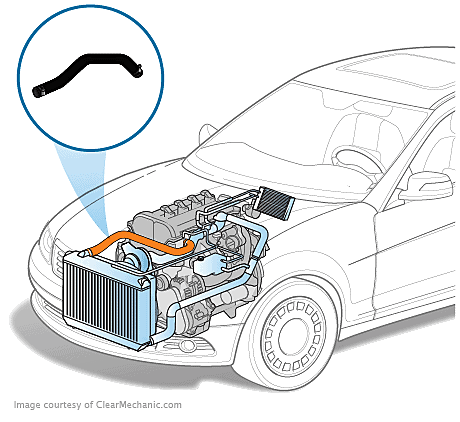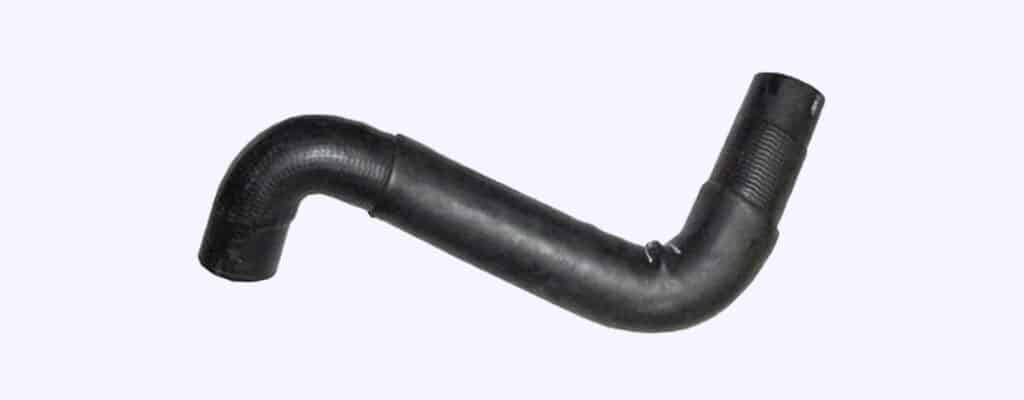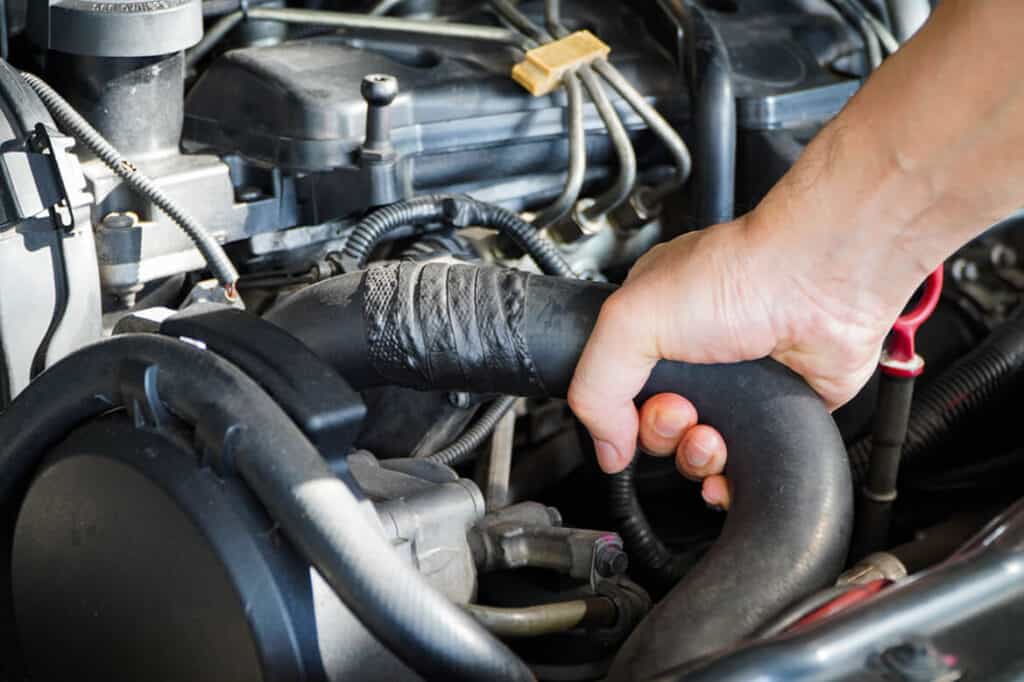Introduction: Ensuring Proper Coolant Flow with High-Quality Radiator Hoses
What is a Radiator Hose?
A radiator hose is a flexible, rubber or silicone tube that connects the engine to the radiator, allowing coolant to circulate between the two. There are typically two hoses: the upper hose, which connects the engine to the top of the radiator, and the lower hose, connecting the engine to the bottom of the radiator.
How Much Will it Cost to Replace a Radiator Hose in Canada?
• Parts: $20 – $60 per hose
• Labour: $50 – $100 (0.5 – 1 hour)
• Total: $70 – $160 per hose
Please note that these costs are approximate and may vary depending on the make and model of your vehicle, as well as the specific mechanic or repair shop you choose.

What are the Symptoms of a Faulty Radiator Hose?
Symptoms of a faulty radiator hose can include:
• Coolant leaks: Cracks or tears in the radiator hose can cause coolant to leak, which may be visible as puddles underneath the car or staining around the hose connections.
• Overheating: Restricted or blocked coolant flow due to a collapsed or kinked hose can cause the engine to overheat, indicated by a high temperature gauge reading or a warning light on the dashboard.
• Low coolant level: A slow leak from a damaged hose can lead to a gradual drop in the coolant level, which may be noticeable when checking the coolant reservoir.
• Visible hose damage: Upon visual inspection, you may notice cracks, bulging, or soft spots on the hose, indicating that it is deteriorating and may be close to failing.
• Collapsed hose: A hose that has collapsed due to internal damage or a vacuum created by a blocked cooling system can restrict coolant flow and lead to overheating.
• Steam or coolant smell: A leaking radiator hose can cause steam or a sweet coolant smell when the engine is running or has recently been turned off.
• Poor engine performance: A severely leaking or damaged radiator hose can cause significant coolant loss, leading to engine overheating and poor performance, including power loss or engine stalling.
How Long Does a Radiator Hose Last?
A radiator hose typically lasts between 96,000 and 160,000 kilometers, depending on factors such as driving habits, climate, and overall maintenance of the cooling system.

How Does a Radiator Hose Become Defective?
A radiator hose can become defective due to several factors, such as:
• Age and wear: Over time, the rubber material in radiator hoses can degrade, becoming brittle or losing its flexibility, which can cause cracks or tears.
• Heat exposure: Constant exposure to high temperatures from the engine and coolant can weaken the hose material over time, making it more susceptible to failure.
• Pressure: Fluctuating pressure within the cooling system can stress the hose walls, causing them to weaken, bulge, or rupture.
• Corrosion: The presence of coolant contaminants or a deteriorating cooling system can cause internal corrosion within the hose, leading to its eventual failure.
• Improper installation: If a radiator hose is not correctly installed, it can become kinked, twisted, or pinched, causing restricted coolant flow or premature wear.
• External damage: Physical damage from debris, engine components, or accidental impacts can puncture or weaken the hose structure.
• Manufacturing defects: Although less common, manufacturing defects in the hose material or construction can lead to premature failure.
How Can a Faulty Radiator Hose Affect Other Systems in the Car?
• Engine overheating: A faulty radiator hose can impede coolant flow or cause leaks, leading to insufficient cooling of the engine and overheating.
• Damage to other engine components: Prolonged engine overheating can cause damage to various engine components, such as the head gasket, cylinder head, and pistons.
• Transmission overheating: Some vehicles use the radiator to cool the transmission fluid. A faulty radiator hose can lead to transmission overheating and damage.
• Reduced efficiency: Engine overheating can cause a decrease in fuel efficiency and overall vehicle performance.
• Potential breakdowns: Leaks or blockages in the radiator hose can cause sudden engine overheating, leading to unexpected breakdowns and leaving you stranded on the side of the road.
Is it Safe to Drive with a Faulty Radiator Hose?
Driving with a faulty radiator hose can be risky, as it can lead to severe engine damage if not addressed promptly. The radiator hose is a crucial component of your vehicle’s cooling system, responsible for transporting coolant between the radiator and the engine. A damaged hose can cause leaks or impede coolant flow, leading to engine overheating and potential engine damage.
While it might be possible to drive a short distance with a faulty radiator hose, it is not advisable. If you suspect a problem with your radiator hose, it’s essential to have it inspected and repaired or replaced by a professional mechanic as soon as possible. Continuing to drive with a damaged radiator hose may result in more severe and costly repairs down the road, as well as increasing the risk of being stranded on the side of the road due to an overheated engine.
How Can I Make My Radiator Hose Last Longer?
• Regularly inspect your cooling system for leaks or damage
• Maintain proper coolant levels
• Replace the coolant according to your vehicle’s manufacturer recommendations
• Keep the radiator clean and free of debris
• Replace old or damaged hoses promptly

Can a Mobile Mechanic Replace a Radiator Hose?
Yes, a mobile mechanic can replace a radiator hose. Mobile mechanics have the necessary tools and expertise to perform this type of repair, making it a convenient option for those who prefer not to visit a traditional repair shop.
Conclusion: Radiator Hose Replacement
A properly functioning radiator hose is crucial for maintaining your engine’s temperature and overall performance. If you notice any signs of a faulty hose, don’t ignore them. Replace the radiator hose promptly to avoid potential engine damage and to keep your vehicle running efficiently and safely.
Next Steps
Book Your Radiator Hose Replacement Service
The service most frequently booked by those who read this article is Radiator Hose Replacement. Uchanics’ expert technicians make the process even more convenient by bringing the service right to your doorstep. We perform this job at your home or office, covering over 40 cities in Ontario, including Toronto, Mississauga, Brampton, Oshawa, Ajax, Scarborough, and more. Our commitment to excellence has earned us more than 700 glowing 5-star reviews. Choose Uchanics for your Radiator Hose Replacement and experience unparalleled convenience and top-quality service.
